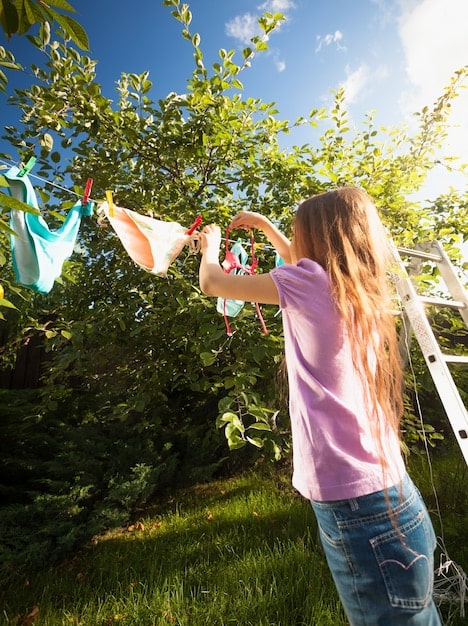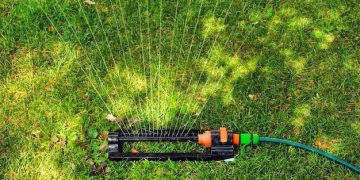Sustainable Living on a Budget: Save $500+ This Year

Sustainable living on a budget is achievable by adopting practices such as reducing food waste, conserving energy, utilizing DIY solutions, and making conscious purchasing decisions, allowing you to save over $500 annually.
Want to embrace sustainable living on a budget: How to Save $500+ This Year? It’s simpler than you think. Small changes in your daily routines can lead to significant savings and a reduced environmental footprint.
Easy Ways to Reduce Food Waste and Save Money
Reducing food waste not only benefits the environment but also helps you save money. Often, food is discarded due to improper storage or a lack of planning. Implement simple strategies to minimize waste and maximize savings.
Plan Your Meals
Meal planning is a crucial step in reducing food waste. By knowing what you’ll eat each week, you can buy only what you need.
Proper Food Storage
Storing food properly prolongs its freshness and reduces spoilage. Use airtight containers and understand where each item should be stored.
- Store fruits and vegetables in the crisper drawer of your refrigerator.
- Keep bread in a bread box or airtight bag to prevent it from drying out.
- Freeze leftovers immediately to preserve them for later use.
By implementing these practices, you can substantially reduce food waste and save a significant amount of money each year. These small changes contribute to both a healthier planet and a healthier wallet.
Energy Conservation Tips for a Sustainable Lifestyle
Conserving energy is not only good for the planet but also for your wallet. Simple changes at home can reduce your energy consumption and lower your utility bills significantly.
Switch to LED Lighting
LED bulbs use up to 75% less energy and last much longer than incandescent bulbs. While the initial cost might be higher, the long-term savings are substantial.
Unplug Electronics When Not in Use
Many electronics continue to draw power even when turned off. Unplug devices like phone chargers, TVs, and computers when they’re not in use.

- Use power strips with an on/off switch to easily cut power to multiple devices at once.
- Set a reminder to unplug devices before leaving for work or going to bed.
- Consider using smart plugs to control devices remotely and monitor energy usage.
By adopting these energy-saving habits, you can make a positive impact on the environment while also enjoying lower energy bills. These small changes can collectively save you a significant amount over time.
DIY Home Solutions to Cut Costs
Creating your own products at home is a great way to save money and reduce waste. DIY solutions often require minimal ingredients and can replace expensive store-bought items.
Homemade Cleaning Products
Many common household cleaners can be easily made with ingredients you likely already have at home, such as vinegar, baking soda, and lemon juice.
Simple Recipes
Mix equal parts of white vinegar and water in a spray bottle for an all-purpose cleaner. Add a few drops of essential oil for a pleasant scent.
- Combine baking soda and water to create a paste for scrubbing surfaces.
- Use lemon juice to disinfect cutting boards and remove odors.
Making your own cleaning products allows you to avoid harsh chemicals and save money. These DIY solutions are effective, eco-friendly, and easy to prepare.
Conscious Consumption: Making Smart Purchasing Decisions
Being mindful of your purchasing habits can lead to significant savings and reduce environmental impact. By making conscious choices, you can avoid unnecessary expenses and support sustainable practices.
Buy in Bulk
Purchasing non-perishable items in bulk often results in lower unit costs. Store these items properly to avoid spoilage.
Repurpose and Reuse
Before buying something new, consider whether you can repurpose or reuse items you already have. This reduces waste and saves money.

- Use old t-shirts as cleaning rags instead of buying disposable wipes.
- Turn glass jars into storage containers for pantry items.
- Repair broken items instead of immediately replacing them.
By practicing conscious consumption, you can save money and reduce your environmental footprint. Making smart purchasing decisions benefits both your wallet and the planet.
Embracing Secondhand Shopping for Savings and Sustainability
Shopping secondhand is an excellent way to save money and reduce waste. Thrift stores and consignment shops offer a wide range of items at significantly lower prices than retail stores.
Clothing and Accessories
Buying clothes secondhand reduces the demand for new clothing production, which can be resource-intensive. You can find unique and high-quality items at thrift stores.
Furniture and Home Goods
Secondhand furniture and home goods are often well-made and can be purchased at a fraction of the original cost. This is a great way to furnish your home sustainably.
- Check local thrift stores and consignment shops regularly for new arrivals.
- Consider attending estate sales or flea markets for unique finds.
- Look for items in good condition that can be easily cleaned or repaired.
By embracing secondhand shopping, you can save money, find unique items, and support a more sustainable lifestyle. It’s a win-win for your wallet and the environment.
Water Conservation: Simple Steps to Lower Your Bills
Conserving water not only helps preserve this valuable resource but also reduces your utility bills. Simple changes in your daily habits can make a big difference.
Shorter Showers
Reducing your shower time by just a few minutes can save a significant amount of water. Try setting a timer to stay on track.
Fix Leaks Promptly
Even small leaks can waste a considerable amount of water over time. Repair leaky faucets and toilets as soon as possible.
- Install low-flow showerheads and toilets to reduce water consumption.
- Collect rainwater for watering plants.
- Water your lawn during the coolest part of the day to minimize evaporation.
By implementing these water-saving measures, you can lower your utility bills and contribute to water conservation efforts. These simple steps add up to significant savings and a more sustainable lifestyle.
| Key Point | Brief Description |
|---|---|
| 🥗Reduce Food Waste | Plan meals, store food properly to minimize waste. |
| 💡Conserve energy | Switch to LED lights, unplug electronics. |
| 🏡DIY Solutions | Make cleaning products at home. |
| 🛍️Conscious Shopping | Buy in bulk and reuse items to reduce consumption. |
Frequently Asked Questions
▼
Meal planning helps you buy only what you need, reducing the chances of food spoiling and saving money by avoiding impulse purchases and food waste.
▼
Switch to LED lighting, unplug electronics when not in use, and use power strips. These simple actions can significantly reduce your energy consumption and bills.
▼
Use ingredients like vinegar, baking soda, and lemon juice to make effective and eco-friendly cleaners. These are simple, cost-effective alternatives to store-bought products.
▼
Shopping secondhand saves money, reduces waste, and allows you to find unique items. It’s a sustainable way to shop for clothing, furniture, and other goods.
▼
Conserving water reduces your utility bills and helps preserve a vital resource. Simple steps like shorter showers and fixing leaks can make a big difference in your water usage.
Conclusion
Adopting **sustainable living on a budget: How to Save $500+ This Year** is not only feasible but also rewarding. By implementing small changes in your daily routines, such as reducing food waste, conserving energy, using DIY solutions, making conscious purchasing decisions, embracing secondhand shopping, and conserving water, you can significantly reduce your expenses and environmental impact. These practices collectively contribute to a more sustainable and financially sound lifestyle, demonstrating that living sustainably doesn’t have to break the bank.





